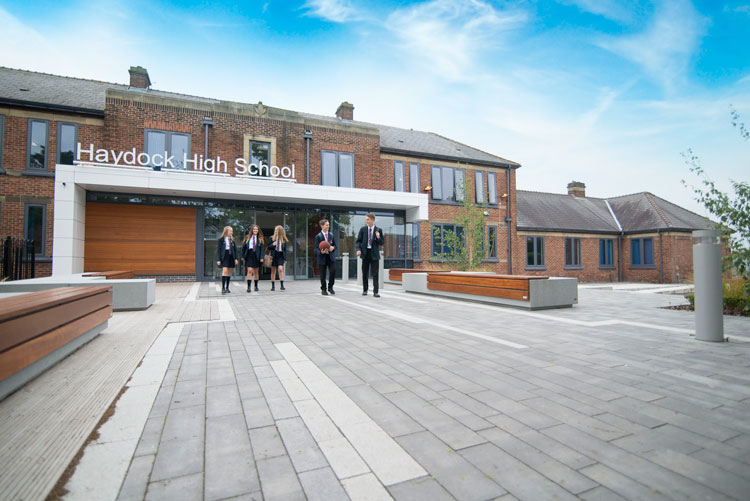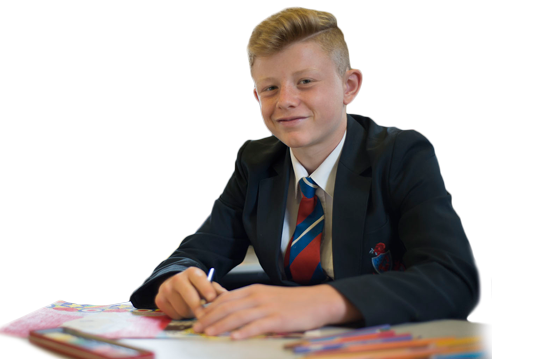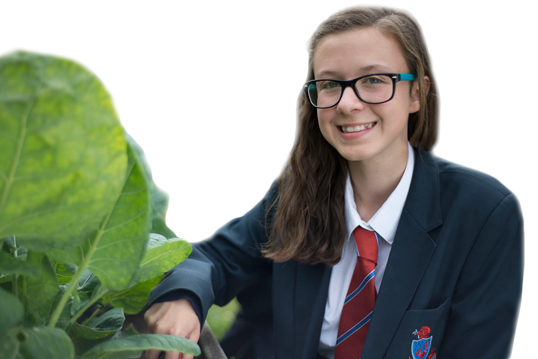
History of the School
The school was officially opened in February 1932 by Sir Percy Meadon, Director of Education for Lancashire. There were two quite distinct departments - one for boys the other for girls. The Headmaster of the Boys’ School was Mr A Ackroyd who had been an assistant master at Morecambe Grammar School. The Headmistress of the Girls’ School was Miss A Kenyon (later Mrs Watson) who had come from Wellingborough High School. There was very little liaison between the two departments although they used the same building. An invisible line was drawn between classrooms 14 and 15 and neither staff nor students crossed it.
Children were drawn from three Junior Schools - Richard Evans (known then as ‘Jaggers’, after the name of a former Headmaster), the Colliery School (also known as ‘Taylor’s’ after a former Headmaster) and St. James. It was a great thrill for most students to be able to attend the ‘new’ school.
The Domestic Science rooms (now rooms 1 and 2), Woodwork rooms (now rooms 6 and 7), Laboratories (now the Library and Music rooms) and the Hall (transformed into a Drama Theatre) were exciting places in which to be taught, and outside the students’ previous experiences of what school was like.
Uniform presented only minor problems. Few Secondary Modern Schools had a uniform and Haydock children were pleased to have the opportunity of wearing one, although in the beginning not all parents could afford to buy it, as it was the time of the Depression when wages were low or fathers were unemployed.
In those days there were no school dinners. A few children, mainly from the Pewfall area, brought sandwiches and Mr Bennett, an admirable caretaker, provided them with a hot drink. The school had no secretaries as all clerical work was done by the Headteacher.
Around 1937 Mr Ackroyd, the Headmaster, was forced to retire because of ill-health and Mr Fitton, an assistant master from Fleetwood Bailey School, was appointed as Head and remained at Haydock until 1953. He left to become Headmaster of Huyton Hey, one of the first Comprehensive Schools, where he remained until his retirement.
Shortly after the outbreak of war in 1939 many of the male staff joined the Forces and were temporarily replaced by women. Only two men returned - Mr Beale and Mr Bell (who later became Headmaster). Mr Stevens was killed in Arnhem and the remainder found posts elsewhere.
In the summer of 1941 the school was closed for a week to house families from Liverpool whose homes had suffered bomb damage. Many of these people were in a sorry state, having suffered sleepless nights and the loss of their possessions. The hall was turned into a dormitory, mainly for the adults, and the children were accommodated by the local people. Some meals were cooked by the staff, with the Domestic Science teacher, Mrs Wood, being in charge.
In 1946 the headmistress of the Girls’ Department retired and was ultimately replaced by Mr Fitton when the two schools were joined to become a co-educational Secondary Modern School in 1947. In 1953 Mr Bell became Headmaster and remained so until his retirement in 1973. Mr Bell died, unfortunately, only two years later on 30th November 1975. Mr Shotton was the next Headmaster who stayed only two years and was succeeded by Mr Fletcher, who was appointed in 1976.
Mr Fletcher remained as Headmaster of Haydock High School (as it was now known) until 1995 when Mrs Johnstone became Headmistress. In 2002 Mrs Johnstone resigned and Mr Fullerton, who had been Acting Headteacher since 2001, was appointed Headteacher in the May of that year.
In September 2008 Mr Fullerton took on a wider leadership role within the St. Helens Local Authority as an Executive Headteacher. In this role he continued to lead Haydock Sports College but, in addition, took on the strategic leadership of Sutton High Sports College.
Mr Fullerton returned to Haydock Sports College full time as the Headteacher in September 2009 and retired at the end of the Summer term in 2010.
Mr Pollard, previously Deputy Headteacher at South Wirral High School, was successful in gaining the position of Headteacher and began his time at Haydock High School in September 2010.
In September 2014, Mr Pollard took up the headship at Standish High School. Deputy Headteacher Mrs Griffiths became Acting Headteacher until January 2015 when Mr Murphy, previously Deputy Headteacher at Standish High School, was appointed Headteacher at Haydock High.
Mr Sheeran, Principal at Cowley International College, took over as Acting Executive Headteacher during the Autumn of 2017. In the Summer of 2018, St Helens Local Authority and the Governors at Haydock and Cowley agreed to a formal partnership called a ‘Soft Federation’. Mr Sheeran became Executive Headteacher with Mr Abram, previously Assistant Headteacher at St. Peter's Catholic School in Solihull, joining Haydock High as Head of School in September 2018.
Charter
We care. We support. We achieve.
At Haydock High School our mission is to care for and support
each student so that they fulfil their potential, make outstanding progress and become successful learners, confident individuals and responsible citizens. We will be relentless in developing our skills, and work with our parents, Governors and wider partners to ensure that every student is known, contributes to our community and is
fulfilled in achieving their ambitions.
information
Haydock Curriculum
The pace of curriculum change continues to accelerate, for example introducing a more flexible Key Stage 3. Our constant planning offers confidence for successful delivery and assessment of these areas.
Over the last few years we have been successful in achieving Sportsmark, Investors in People, Artsmark, Careers and Guidance and Healthy Schools accreditation. We were also awarded the accolade of a ‘Get Set’ school in the run-up to the 2012 London Olympics.
& Our School
We are proud of our School
We take great pride in serving the needs of our students and are dedicated to each and every one of them making outstanding progress in their time at our school. To this end, we undertake a significant commitment and interest in them as individuals so that we can most effectively meet their specific needs. This care for their achievement means we have the very highest expectations of their attendance, respect for the school and our ethos, behaviour, happiness, fulfilment and academic progress.
information
Haydock Leisure Centre
Facilities With a £250,000 refurbishment in 2006, the PE department and Leisure Centre were refurbished to accommodate more people and classes, offering a wide range of activities to students and the wider community. The changing rooms are of a high standard with disabled access, automatic showers and private cubicles. Sports Hall The Sports Hall can accommodate the following: 5 a side football, whole Sports Hall Cricket, whole Sports Hall Badminton, whole or half Sports Hall Keep Fit and much more.




